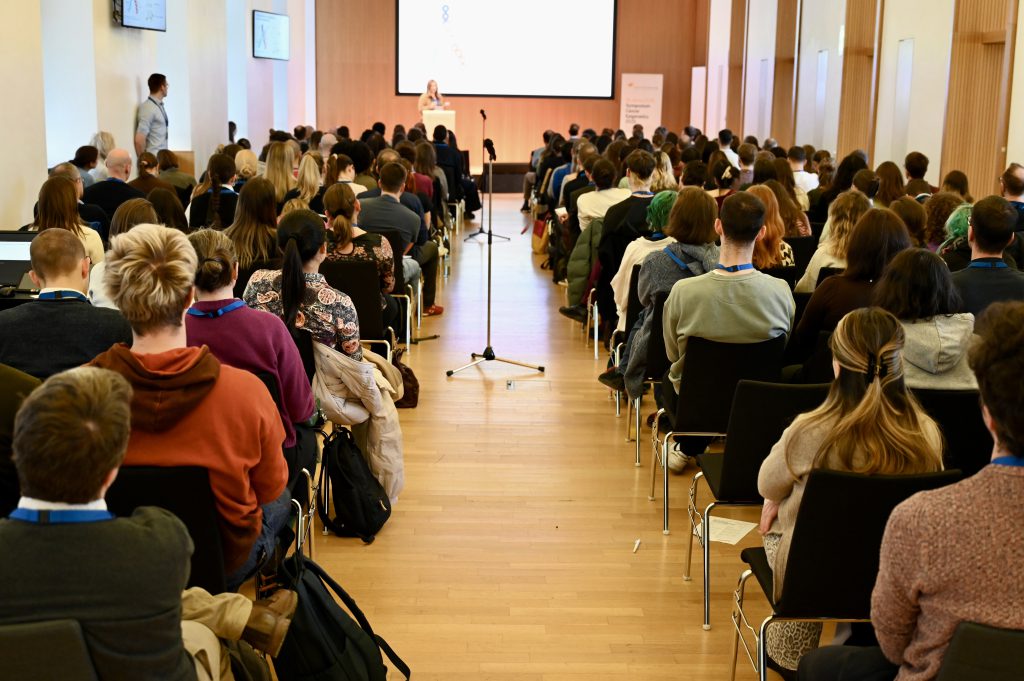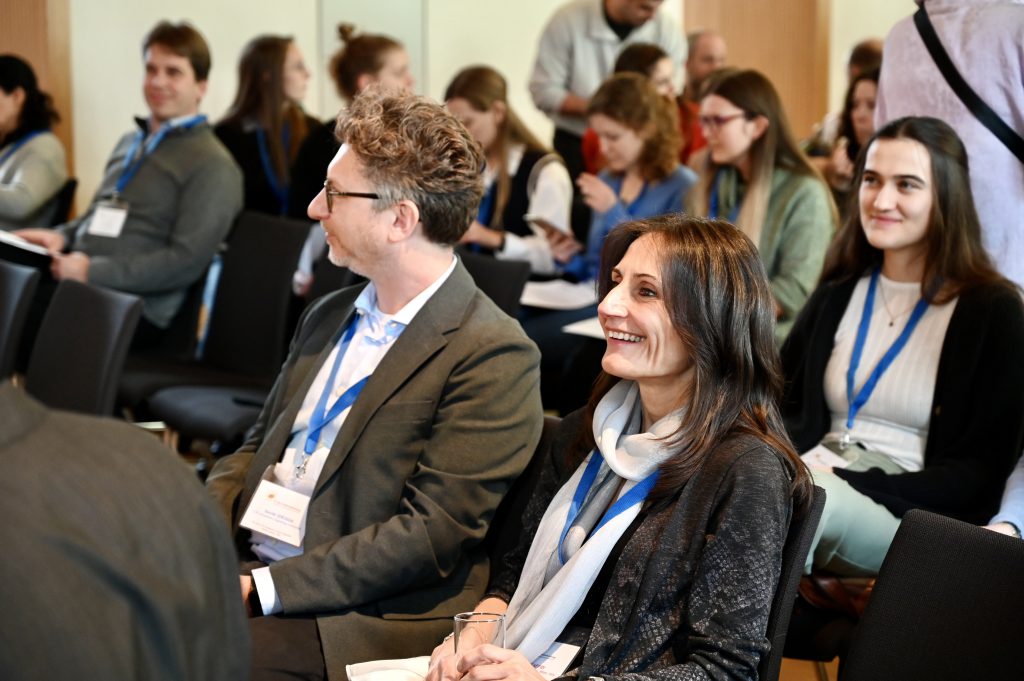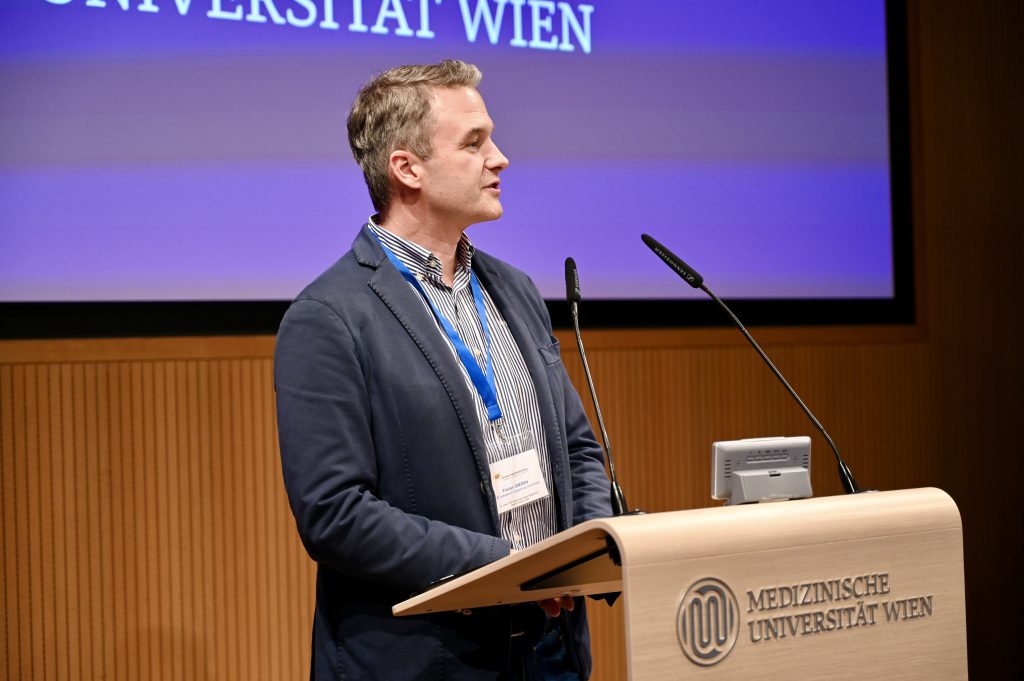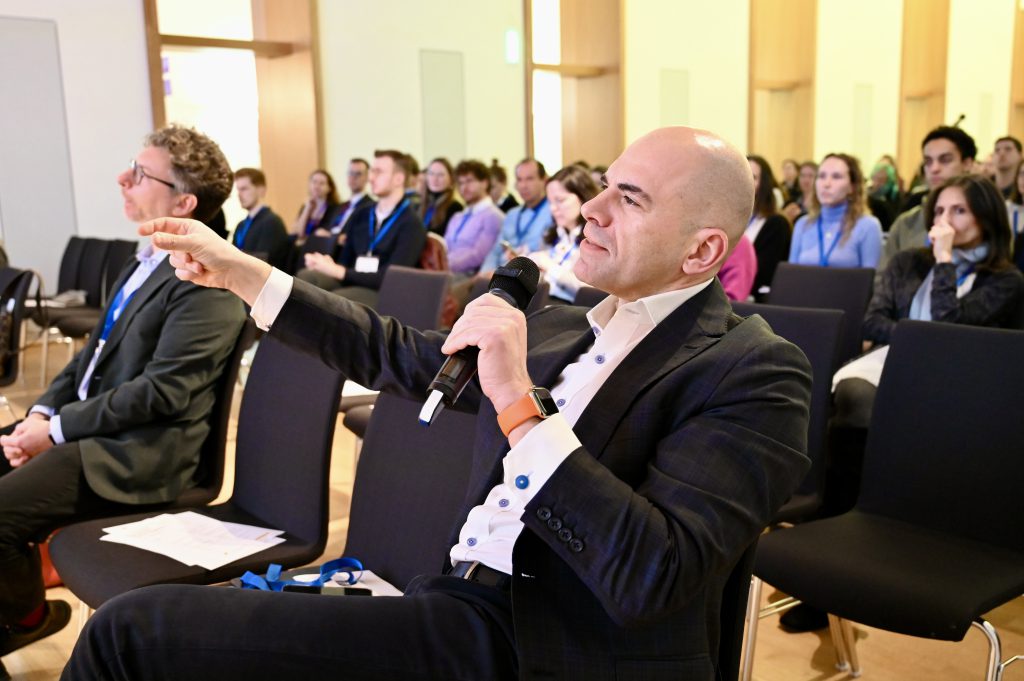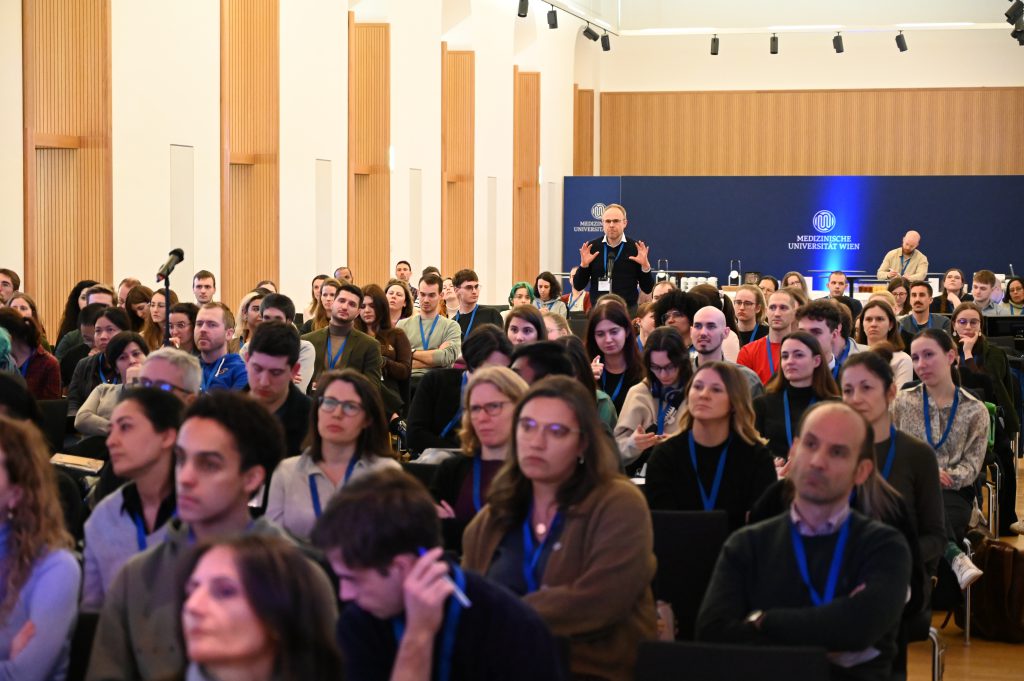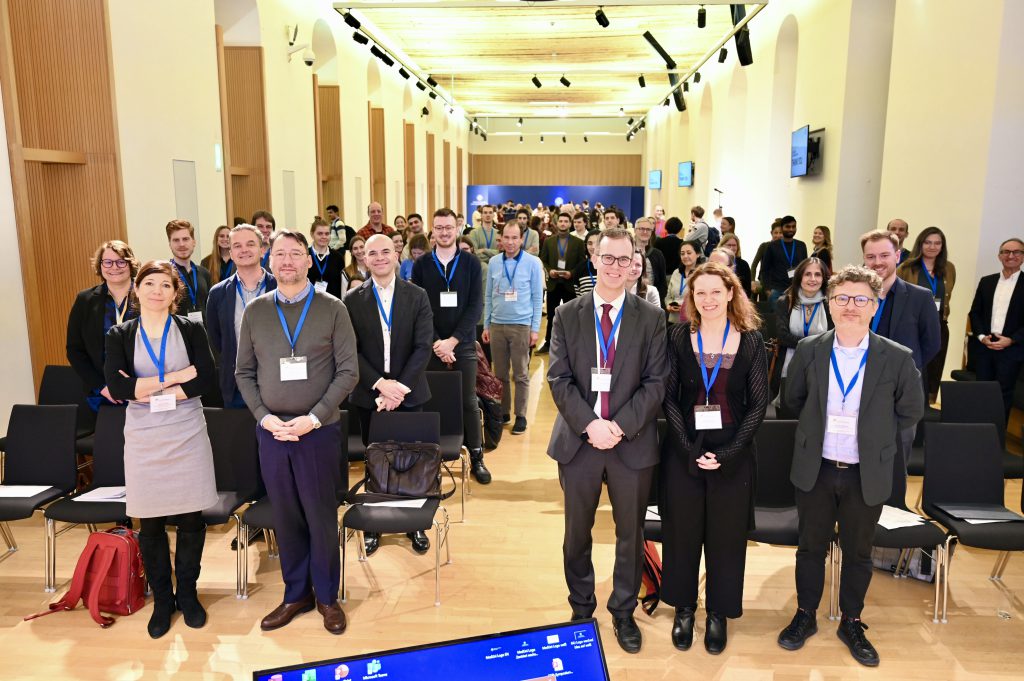Epigenetics Brings Hope for New Therapies
Epigenetics is a key area of pediatric cancer research. Scientists are investigating molecular drivers of tumors, hoping to discover new therapies through these approaches. St. Anna Children’s Cancer Research Institute (St. Anna CCRI) has long focused on epigenetics and recently hosted a networking meeting on the topic.
Adult tumors often exhibit numerous DNA mutations that drive the hallmarks of cancer: uncontrolled growth, invasion of surrounding tissue, and evasion of the immune system. Pediatric cancers also display these characteristics but with far fewer DNA mutations. This is where epigenetics comes into play. Researchers study molecular “switches” that can turn genes on or off, influencing cancer development.
Findings like these are crucial in developing novel treatment strategies targeting such changes—potentially leading to gentler therapies for affected children. Epigenetic research is highly relevant, as many questions remain unanswered. To address this, St. Anna CCRI has established multiple research groups dedicated to the field. To foster international collaboration, the St. Anna CCRI Symposium Cancer Epigenetics was recently held at the Van Swieten Hall of the Medical University of Vienna. The meeting was organized by Davide Seruggia, Eleni Tomazou, Florian Grebien and Kaan Boztug, all Principal Investigators at St. Anna CCRI.
How Does Cancer Develop?
The work of Paola Scaffidi and her team at the Department of Experimental Oncology of the European Institute of Oncology (IEO) in Milan shows how epigenetic changes through the function of enhancers, genetic instability and interaction with the tumor environment influence cancer development. In her presentation, she emphasized that the combination of these is the disease driver. You could say that if a gene is the content of a letter, the enhancers are the address on the envelope. Which specific cells are the recipients of the message? And mutations in enhancers can have dramatic effects: A message is sent to the wrong tissue in the body, it is delayed or lost altogether. A kind of chain reaction is triggered during which cellular “brakes”, so-called tumor suppressor genes, are silenced. The cells lose the ability to repair themselves or die in a controlled manner – which contributes to tumor formation.
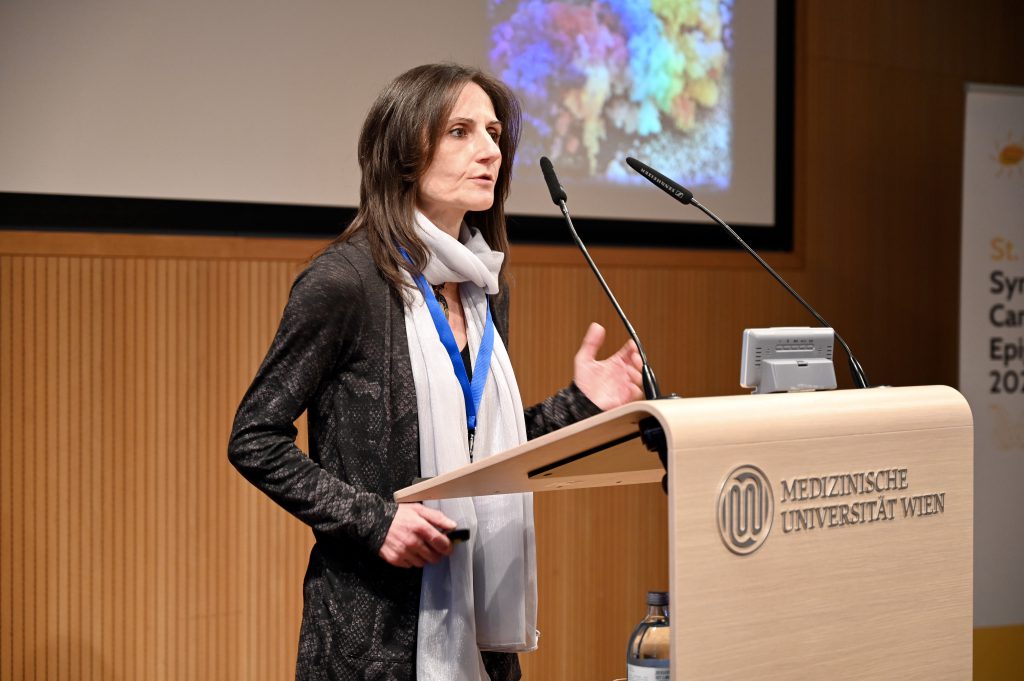
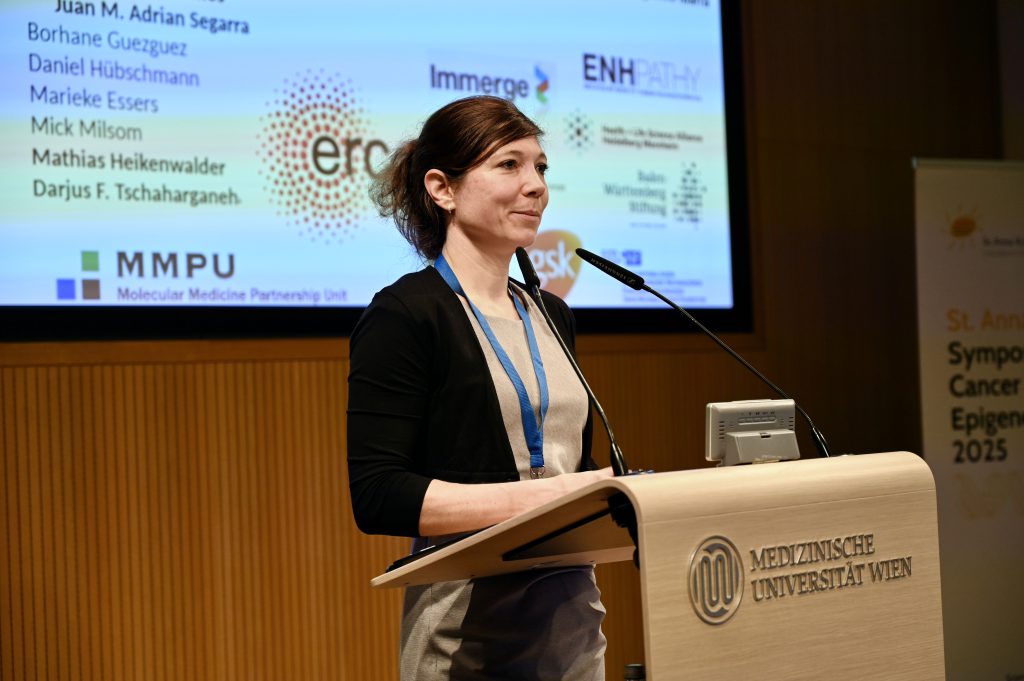
What Are Enhancers?
Judith Zaugg, Professor of Molecular Medicine at the University of Basel, leads a research group focused on enhancers. She investigates how errors in these enhancers—caused by genetic changes or external influences—can trigger diseases such as cancer or genetic disorders. Zaugg reported that her team employs computational methods to understand how DNA is regulated and how these processes influence disease development.
Which Gene Might Cause Medulloblastoma?
The research of Alexis Kentsis and his team at Memorial Sloan Kettering Cancer Center suggests that a gene called PGBD5 plays a key role in certain pediatric cancers, particularly medulloblastoma, a brain tumor occurring in the posterior region of the skull. PGBD5 can cause specific DNA breaks and rearrangements, leading to mutations in genes that control tumor growth.
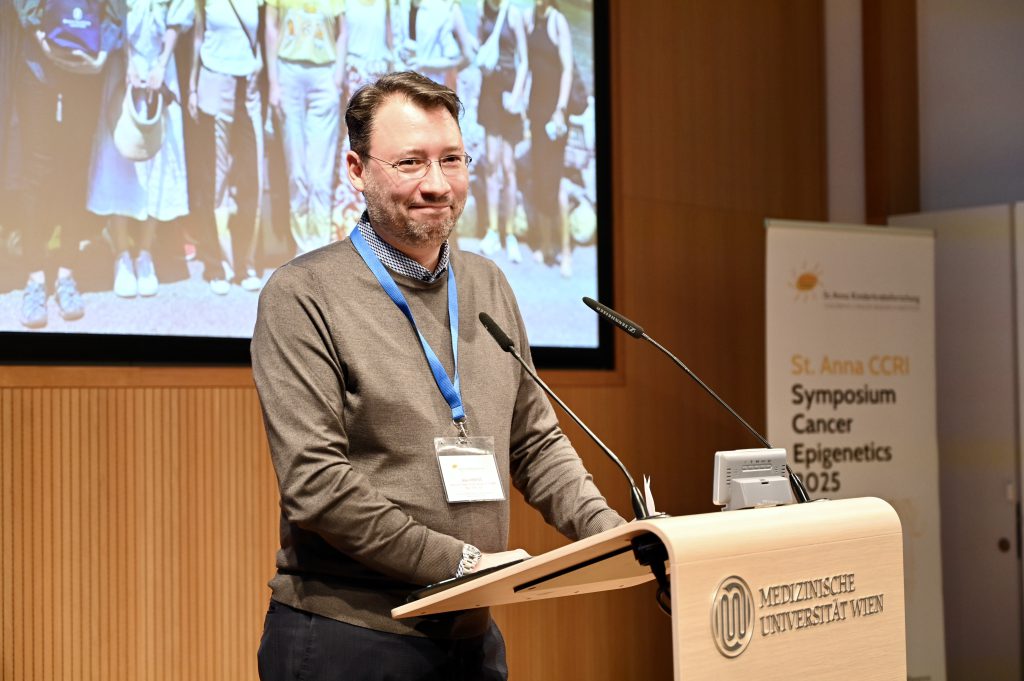
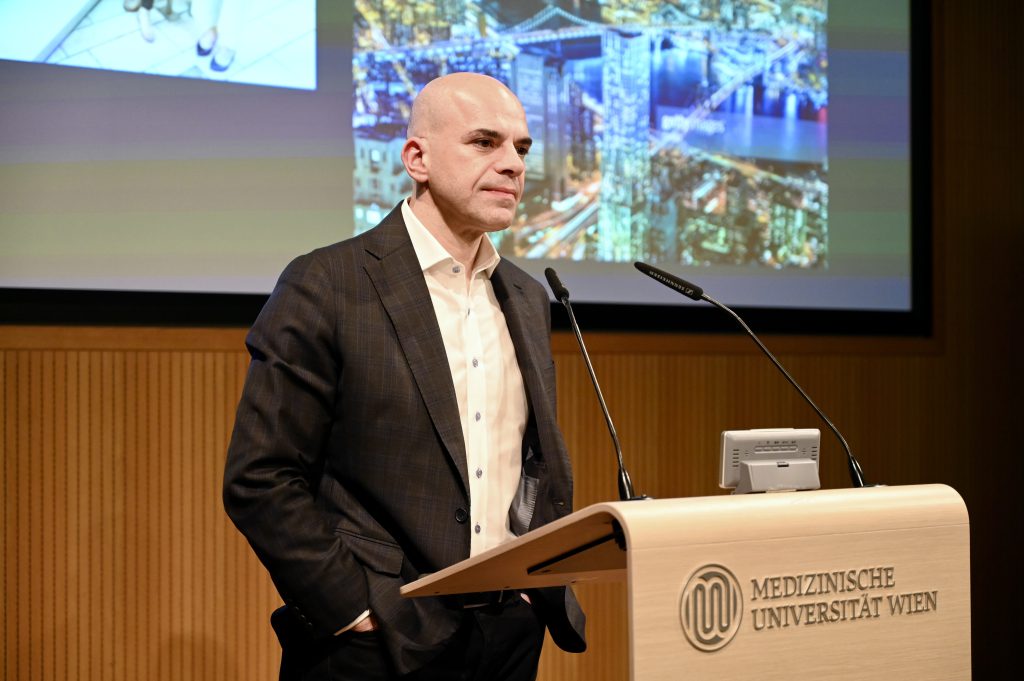
How Can Cancer Cells Be Weakened?
Iannis Aifantis from the NYU School of Medicine studies how the genome is organized and the role of these structures in a particular type of blood cancer (acute T-cell leukemia, T-ALL). Aifantis and his team discovered that 3D chromatin hubs activate certain genes that promote cancer cell survival. But what exactly are 3D chromatin hubs? These are regions in the cell nucleus where multiple DNA segments cluster closely together, collectively regulating gene activation or suppression. Aifantis explained that a specific regulatory gene, MYB, plays a central role: blocking it can weaken cancer cells.
Young Cancer Researchers at St. Anna CCRI
Two young Principal Investigators at St. Anna CCRI also presented their work during the symposium. Polina Kameneva studies the origins of neuroblastoma, a cancer that arises in nerve tissue. 49 % of all neuroblastomas develop near the adrenal glands, but the reasons for this remain unknown. To uncover the mechanism, Kameneva’s team examined adrenal gland development. They found that a high number of sympathetic nerve cells are present during early developmental stages and investigated how these cells change over time. Her work is supported by a prestigious FWF START grant.
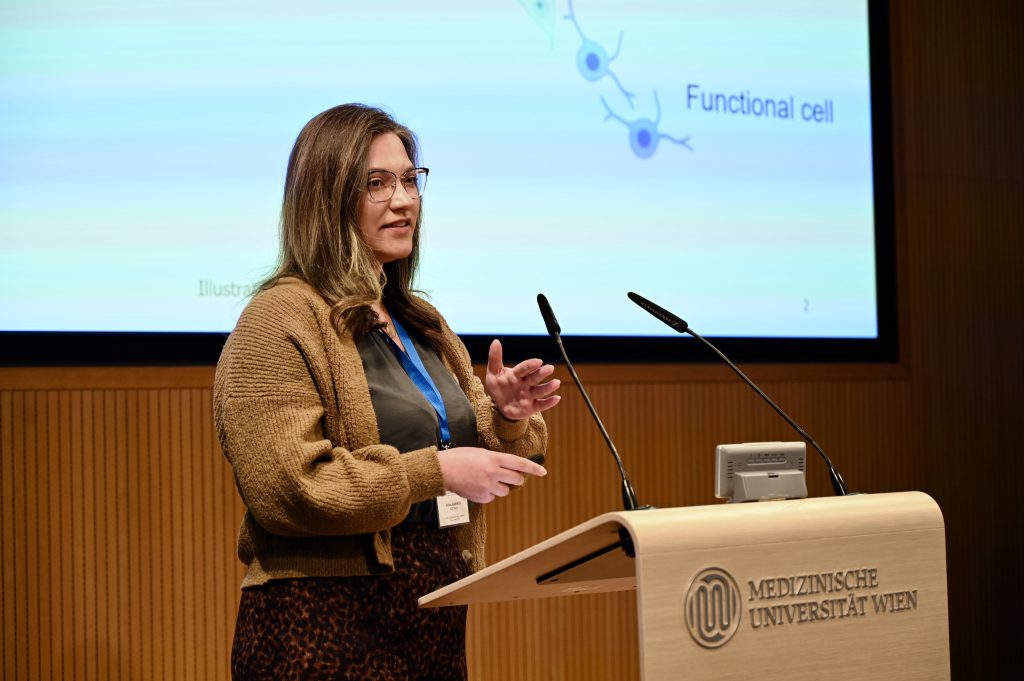
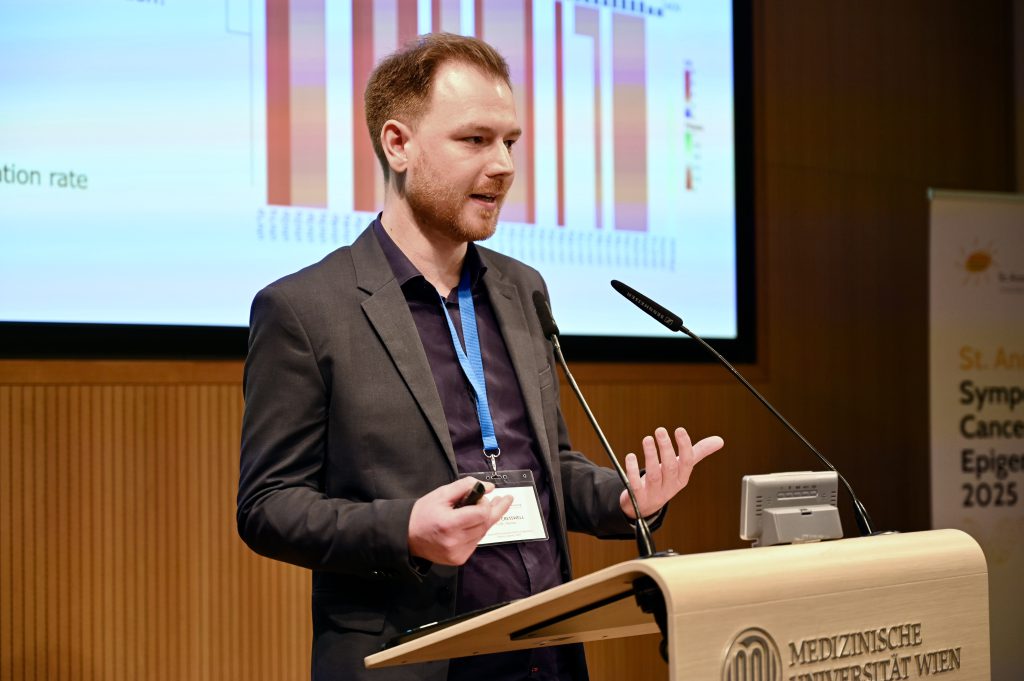
George Cresswell then discussed how chromosomal instability—errors occurring when cells distribute their chromosomes during division—affects cancer progression. He reported on a study (Nature Cancer) that he carried out during his time at the Institute of Cancer Research (Sottoriva lab, London). It shows that a large variety of chromosomal changes at diagnosis correlates with faster tumor recurrence in a clinical study of prostate cancer. Cresswell applied these insights to pediatric cancers, emphasizing that childhood cancers follow unique developmental patterns. His preliminary findings suggest that chromosomal instability could also play a crucial role in the progression of pediatric kidney cancer.
Ultimately, all of this important research may lead to clinical applications. However, many more scientific studies are needed—driven by curiosity and perseverance—to answer a lot of open questions.
